Zones of Regulation
Return to Latest News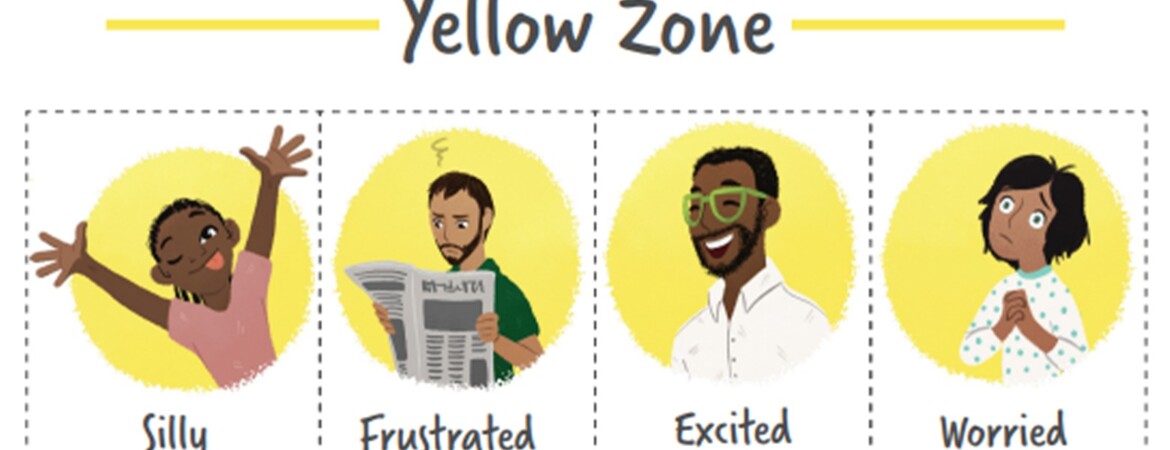
At Mary Astell Academy we are introducing The Zones of Regulation across the school. This method has proven benefits in supporting children (and adults!) to better manage their emotional regulation and therefore their reaction to feelings.
Many of our pupils need support in this area of their lives and we hope that the zones will be a successful strategy.
What are the Zones of Regualtion?
The Zones of Regulation framework and curriculum (Kuypers, 2011) teaches students skills developing awareness of their feelings/internal state and utilises a variety of tools and strategies for regulation, prosocial skills, self-care, and overall wellness. This includes exploring tools and strategies for mindfulness, sensory integration, movement, thinking strategies, wellness, and healthy connection with others. The Zones of Regulation provides a common language and compassionate framework to support positive mental health and skill development for all, while serving as an inclusion strategy for neurodiverse learners, those who have experienced trauma, and/or have specific needs in terms of social, emotional, and behavioural development.
The Zones of Regulation creates a systematic approach to teach regulation by categorising all the different ways we feel and states of alertness we experience into four concrete coloured zones. Integrating in cognitive behaviour therapy, students build skills in emotional and sensory regulation, executive functioning, and social cognition. The framework is designed to help move students toward more independent regulation while also honouring and respecting each student and their unique self.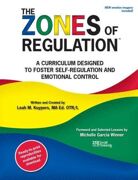
The Four Zones: Our Feelings and States Determine our Zone
The Red Zone is used to describe extremely heightened states of alertness and intense emotions. A person may be elated or experiencing anger, rage, devastation, or terror when in the Red Zone.
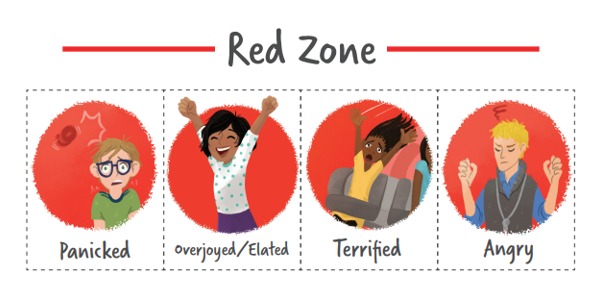
The Yellow Zone is also used to describe a heightened state of alertness and elevated emotions, however one has more control when they are in the Yellow Zone. A person may be experiencing stress, frustration, anxiety, excitement, silliness, the wiggles, or nervousness when in the Yellow Zone.
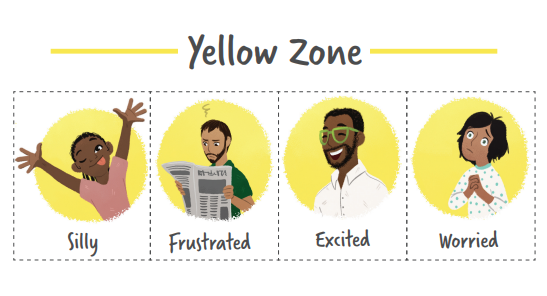
The Green Zone is used to describe a calm state of alertness. A person may be described as happy, focused, content, or ready to learn when in the Green Zone. This is the zone where optimal learning occurs.
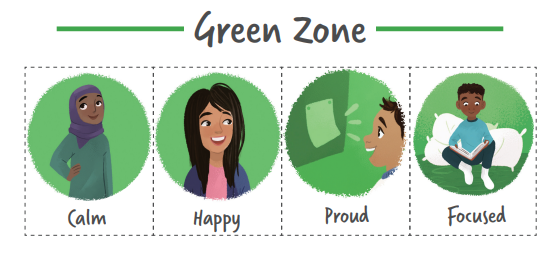
The Blue Zone is used to describe low states of alertness and down feelings such as when one feels sad, tired, sick, or bored. 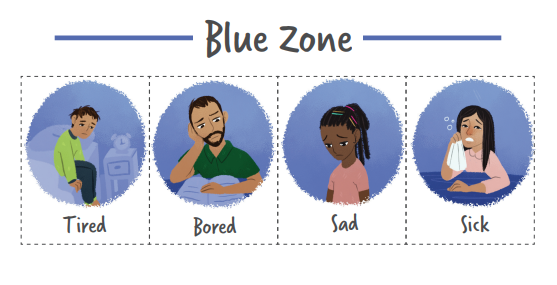
The zones can be compared to traffic signs. When given a green light or in the Green Zone, one is “good to go”.

A yellow sign means be aware or take caution, which applies to the Yellow Zone.
A red light or stop sign means stop, and when one is the Red Zone this often is the case.
The Blue Zone can be compared to the rest area signs where one goes to rest or re-energize.
All of the zones are natural to experience, but the framework focuses on teaching students how to recognise and manage their Zone based on the environment and its demands and the people around them. For example, when playing on the playground or in an active/competitive game, students are often experiencing a heightened internal state such as silliness or excitement and are in the Yellow Zone, but it may not need to be managed. However, if the environment is changed to the library where there are different expectations than the playground, students may still be in the Yellow Zone but have to manage it differently so their behaviour meets the expectations of the library setting.
See the Zones of Regulation website here
You can also download a Zones of Regulation App for your phone or tablet from your app store.
Parents and Carers can support their children by encouraging the use of the ‘Zones’ language at home. More soon about how you can help.